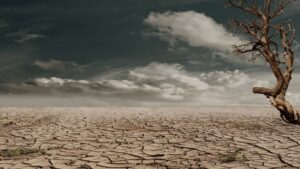As rainfall hits record lows, southern Australia faces a severe and expanding drought. Farmers, ecosystems, and entire towns are grappling with the impacts and scientists warn this could be just the beginning.
 Where Has the Rain Gone?
Where Has the Rain Gone?
Swathes of South Australia, Victoria, Tasmania, and Western Australia are currently enduring some of the driest conditions on record. This extended dry spell has left farms parched, waterways empty, and communities scrambling to secure drinking water.
According to the Australian Bureau of Meteorology, vast regions are experiencing serious rainfall deficiencies. The rains that usually arrive to replenish soil, feed livestock, and fill tanks have simply failed to show up. In their place, slow-moving high-pressure systems have dominated the skies, bringing persistent warm and dry weather instead.
Understanding the Mechanics of Drought
So why has the rain disappeared?
Recent research reveals that droughts in Australia occur when key weather systems that carry moisture inland from the oceans vanish. These systems driven by large-scale climate interactions like the Indian Ocean Dipole (IOD), the El Niño–Southern Oscillation, and the Madden-Julian Oscillation (MJO) are essential to delivering heavy, drought-breaking rainfall.
In southern Australia, these systems have been notably absent. Instead, high-pressure systems have stagnated over the region for months. This shift in atmospheric behavior has caused rivers and wetlands to dry up and left wildlife, especially endangered species reliant on aquatic habitats, increasingly vulnerable.
A Harsh Season for Farmers
Farmers are among the hardest hit. Many are being forced to purchase expensive feed or sell livestock prematurely to manage dwindling water and pasture supplies. Financial stress is rising rapidly in rural communities, especially in areas that rely heavily on agriculture.
Some towns particularly those not connected to centralized water systems, are now facing critical shortages. In the Adelaide Hills, water trucks are being dispatched to refill empty tanks and dams. Meanwhile, desalination plants in Adelaide and Victoria have been ramped up to ensure drinking water supply as dam levels drop across the region.
A Glimpse Into the Future?
This drought may be more than just a passing hardship it could be a preview of Australia’s climate future.
Data shows that southern Australia has been drying steadily over the past few decades, particularly during the cooler months between April and October. These trends align closely with future climate projections, which suggest that droughts in this region will become both longer and more frequent.
The 2017–2019 “Tinderbox Drought” was the first Australian drought linked to possible climate change amplification. And while it’s too early to attribute this current event entirely to global warming, experts caution that the increasing frequency of such droughts fits with climate change models.
When Will It End?
One of the most pressing questions for farmers, local councils, and water authorities is how much longer the drought will last. Unfortunately, pinpointing the duration of a drought remains notoriously difficult.
What is clear is that southern Australia will need sustained, widespread rainfall to break the current dry spell. Encouragingly, meteorologists note there is a reasonable chance of increased rainfall as the country moves into spring the region’s traditionally wetter season.
Yet, as always with weather forecasts, conditions may shift. All eyes will be on the Bureau of Meteorology’s next update, as stakeholders await any sign of a turning point.
What Can Be Done?
With the risk of drought becoming an increasingly permanent feature of the Australian landscape, there’s growing urgency to adapt. Solutions will need to be both local and national, involving:
- Setting sustainable water usage limits
- Investing in water recycling infrastructure
- Improving agricultural and urban water efficiency
- Enhancing community preparedness for prolonged dry periods
By integrating the latest climate science into water planning and policy, Australia can build resilience and mitigate the worst impacts of a drying climate.
Every Drop Counts
As climate variability intensifies, southern Australia’s communities must come to terms with a new normal. Whether through innovation, smarter water management, or collective behavioral change, one truth rings clear: we must make every drop count.
This drought may not be the last, but with knowledge, planning, and action, it doesn’t have to be a crisis repeated.
